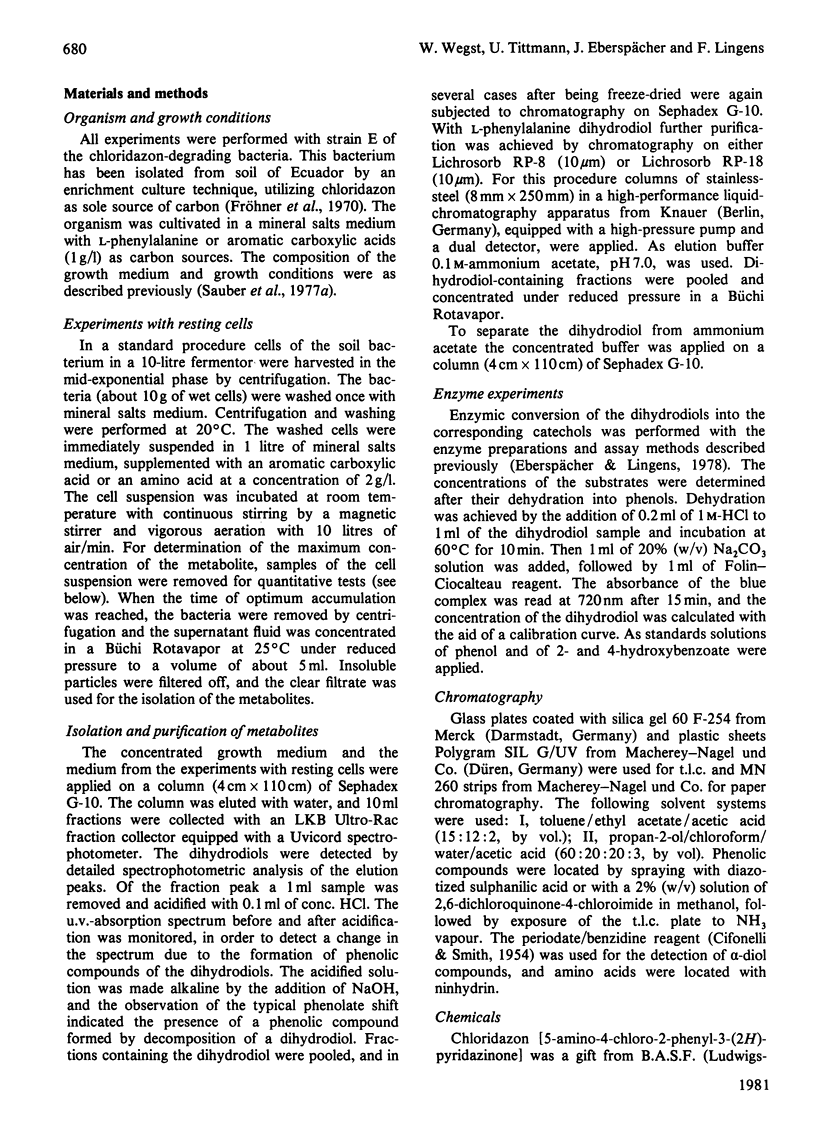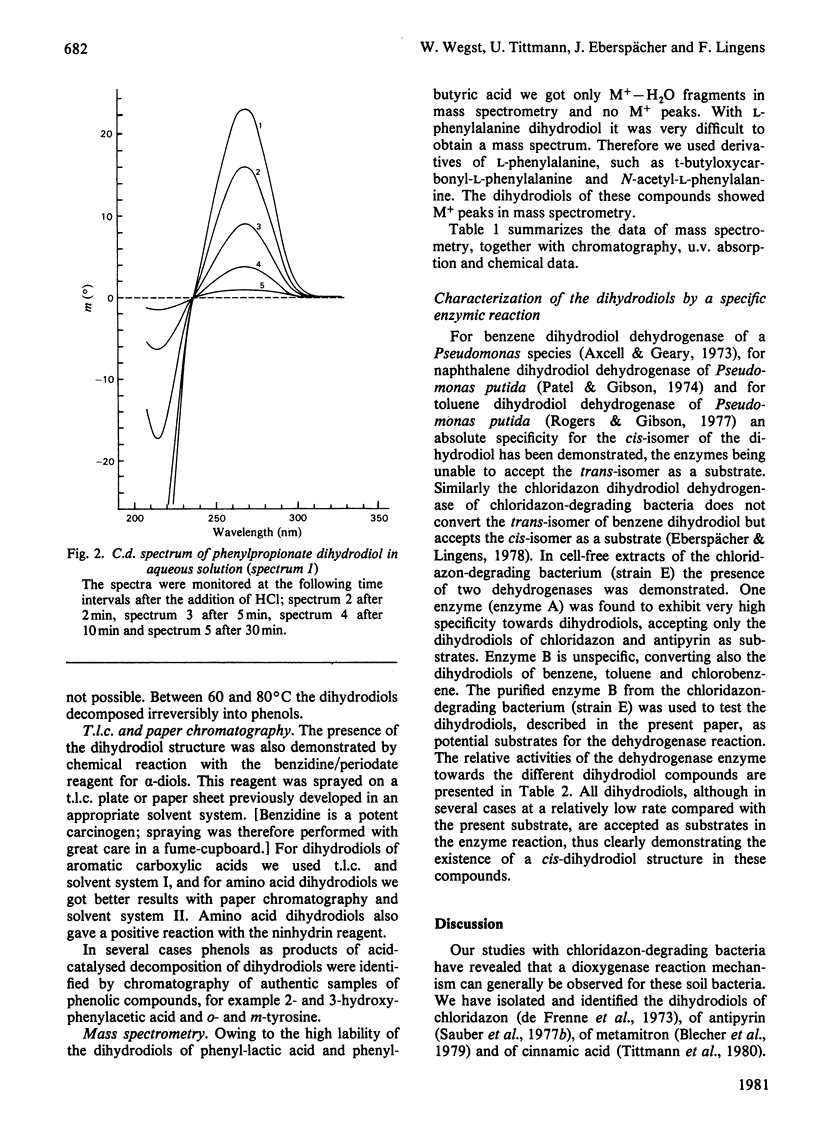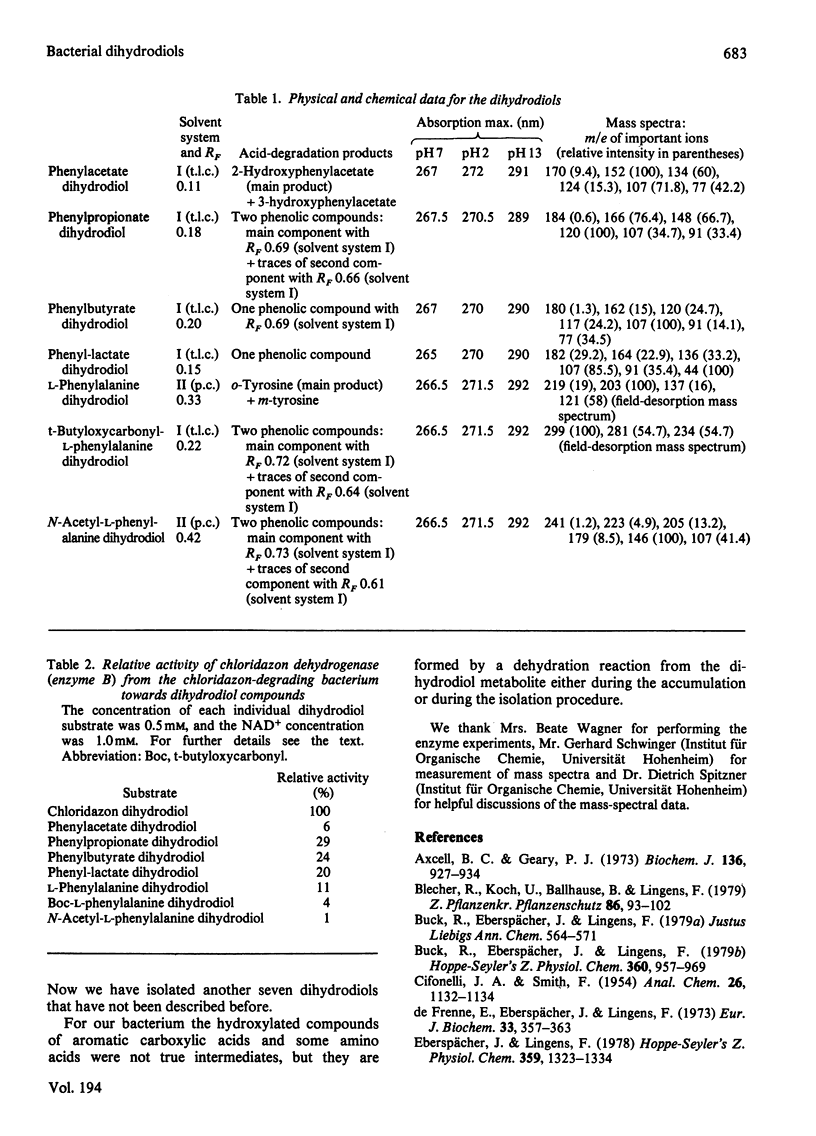Abstract
Strain E of chloridazon-degrading bacteria, when grown on L-phenylalanine accumulates cis-2,3-dihydro-2,3-dihydroxyphenylalanine. In experiments with resting cells and during growth the bacterium converts the aromatic carboxylic acids phenylacetate, phenylpropionate, phenylbutyrate and phenyl-lactate into the corresponding cis-2,3-dihydrodiol compounds. The amino acids L-phenylalanine, N-acetyl-L-phenylalanine and t-butyloxycarbonyl-L-phenylalanine were also transformed into dihydrodiols. All seven dihydrodiols, thus obtained, were characterized both by conventional analytical techniques and by the ability to serve as substrates for a cis-dihydrodiol dehydrogenase.
Full text
PDF





Selected References
These references are in PubMed. This may not be the complete list of references from this article.
- Axcell B. C., Geary P. J. The metabolism of benzene by bacteria. Purification and some properties of the enzyme cis-1,2-dihydroxycyclohexa-3,5-diene (nicotinamide adenine dinucleotide) oxidoreductase (cis-benzene glycol dehydrogenase). Biochem J. 1973 Dec;136(4):927–934. doi: 10.1042/bj1360927. [DOI] [PMC free article] [PubMed] [Google Scholar]
- Buck R., Eberspächer J., Lingens F. Abbau und Biosynthese von L-phenylalanin in chloridazon-abbauenden Bakterien. Hoppe Seylers Z Physiol Chem. 1979 Jul;360(7):957–969. [PubMed] [Google Scholar]
- De Frenne E., Eberspächer J., Lingens F. The bacterial degradation of 5-amino-4-chloro-2-phenyl-3(2H)-pyridazinone. Eur J Biochem. 1973 Mar 1;33(2):357–363. doi: 10.1111/j.1432-1033.1973.tb02690.x. [DOI] [PubMed] [Google Scholar]
- Eberspächer J., Lingens F. Reinigung und Eigenschaften von zwei Chloridazondihydrodiol-Dehydrogenasen aus Chloridazon-abbauenden Bakterien. Hoppe Seylers Z Physiol Chem. 1978 Oct;359(10):1323–1334. [PubMed] [Google Scholar]
- Fröhner C., Oltmanns O., Lingens F. Isolierung und Charakterisierung Pyrazon-abbauender Bakterien. Arch Mikrobiol. 1970 Oct 21;74(1):82–89. [PubMed] [Google Scholar]
- Gibson D. T., Roberts R. L., Wells M. C., Kobal V. M. Oxidation of biphenyl by a Beijerinckia species. Biochem Biophys Res Commun. 1973 Jan 23;50(2):211–219. doi: 10.1016/0006-291x(73)90828-0. [DOI] [PubMed] [Google Scholar]
- Patel T. R., Gibson D. T. Purification and propeties of (plus)-cis-naphthalene dihydrodiol dehydrogenase of Pseudomonas putida. J Bacteriol. 1974 Sep;119(3):879–888. doi: 10.1128/jb.119.3.879-888.1974. [DOI] [PMC free article] [PubMed] [Google Scholar]
- Rogers J. E., Gibson D. T. Purification and properties of cis-toluene dihydrodiol dehydrogenase from Pseudomonas putida. J Bacteriol. 1977 Jun;130(3):1117–1124. doi: 10.1128/jb.130.3.1117-1124.1977. [DOI] [PMC free article] [PubMed] [Google Scholar]
- Sauber K., Fröhner C., Rosenberg G., Eberspächer J., Lingens F. Purification and properties of pyrazon dioxygenase from pyrazon-degrading bacteria. Eur J Biochem. 1977 Mar 15;74(1):89–97. doi: 10.1111/j.1432-1033.1977.tb11370.x. [DOI] [PubMed] [Google Scholar]
- Sauber K., Müller R., Keller E., Eberspächer J., Lingens F. Abbau von Antipyrin durch Pyrazon-abbauende Bakterien. Z Naturforsch C. 1977 Jul-Aug;32(7-8):557–562. [PubMed] [Google Scholar]


